A Day of Stone Conservation
Aren't sure exactly what goes on during a stone conservation day? It's a lot of digging, watering, sleuthing, and fun! We reset stones that may be leaning or fallen, and we clean stones that are in need of a wash. Here's a little summary of what we did on a typical day in 2013. Hopefully you'll find it interesting enough to join us.
We learned how to reset and clean these historic stones from professionals such as: Fred Oakley, Joe Ferranini, Kai Nalenz, and Ta Mara Conde. They taught us to do no harm, and to only do things that can one day be undone if needed. We adhere to the direction of the Association for Gravestone Studies.
Cleaning Stones
Cleaning our stones is done mostly with water. We use very soft brushes to carefully scrub bird doo and soot on slate stones. We use a product called D2 to remove, as they attest, "stains from mold, algae, mildew, lichens and air pollutants." It is non-toxic, and we either spray it on and leave it, or spray and scrub with a brush.
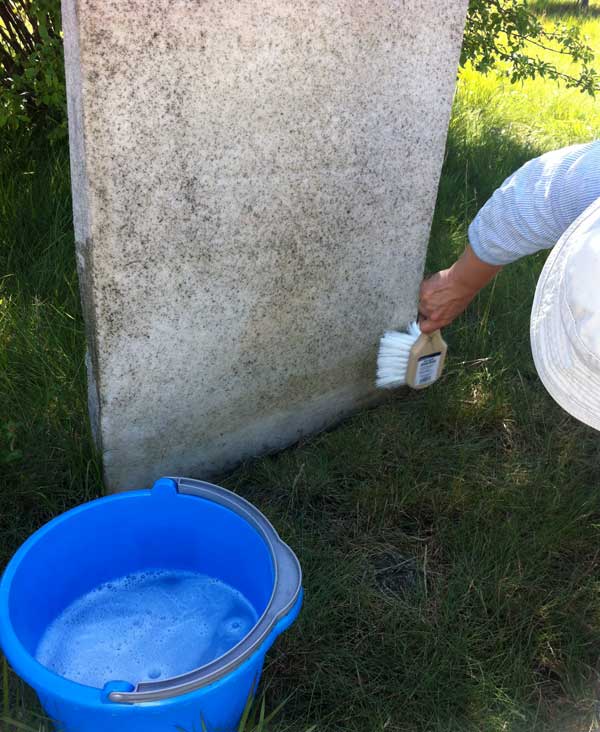
Martha cleans a marble stone using a very soft brush dipped in a bucket of a dilute D2 solution.
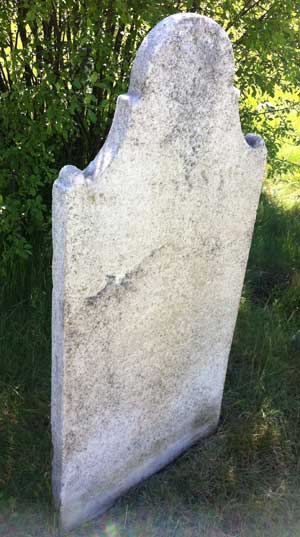
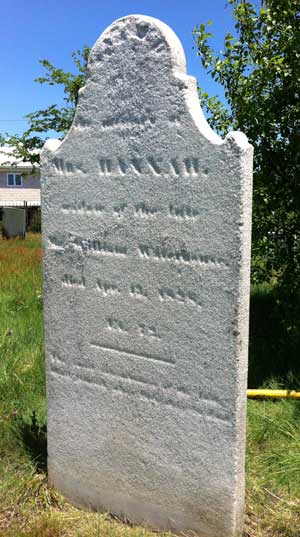
Hannah Waterhouse's headstone before and after cleaning.
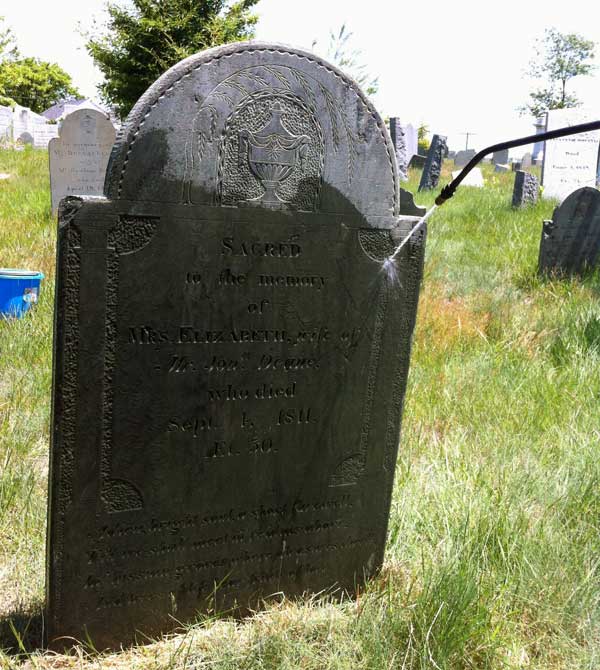
Elizabeth Deane's headstone gets a thorough cleaning. We use a pump-style hand-sprayer for washing stones. It rinses the stone without being so strong to cause damage.
Resetting Stones
When a stone is leaning badly, moveable to the touch, or laying on the ground, we often choose to reset it. This involves a lot of muscle and careful digging. We then uncover the mysteries of the earth such as marbles, shells, and most often: gravestone bases. These slotted bases were used as underground stabilizers, and are often sunken even further into the earth than they should be. We level them on top of gravel, bringing them closer to the surface. We bury the stones 1/3 underground which often means a very deep hole needs to be made. A mixture of gravel and dirt is placed into the hole, and the stone is capped off with replacement sod that had been removed from the area. Here are a series of photographs that illustrate the resetting of Huldah Warren's slate headstone.
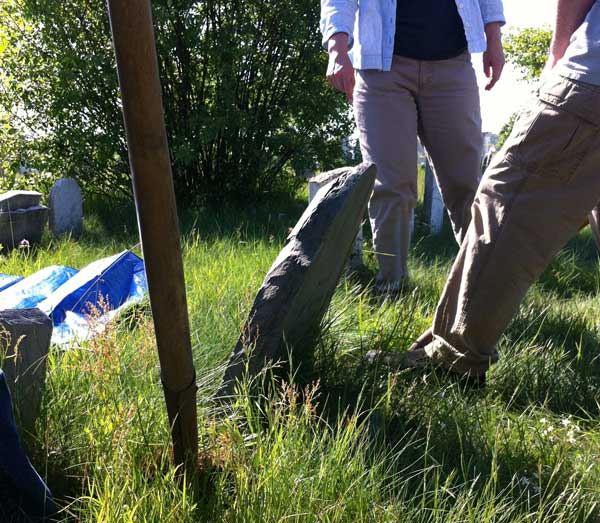
Huldah Warren's stone is a leanin'.
To compare it with the final product, skip to the reset stone photo.
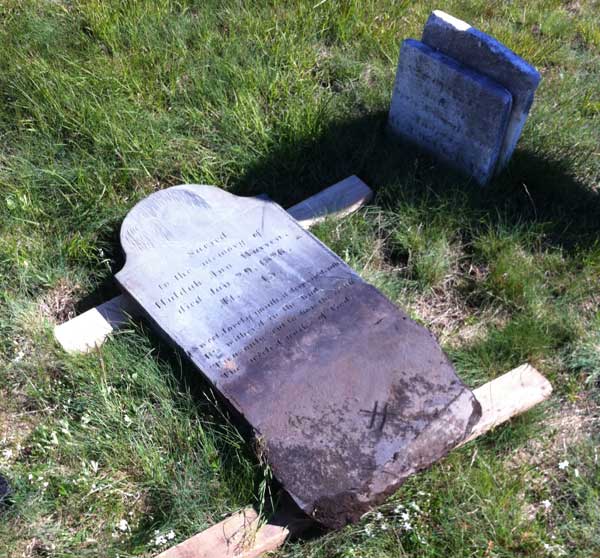
After pulling Huldah's headstone from the ground, we find a hashmark (what looks like an H) made by the carver on the bottom of the stone! This will line up with the hashmark found on the base inside the hole.
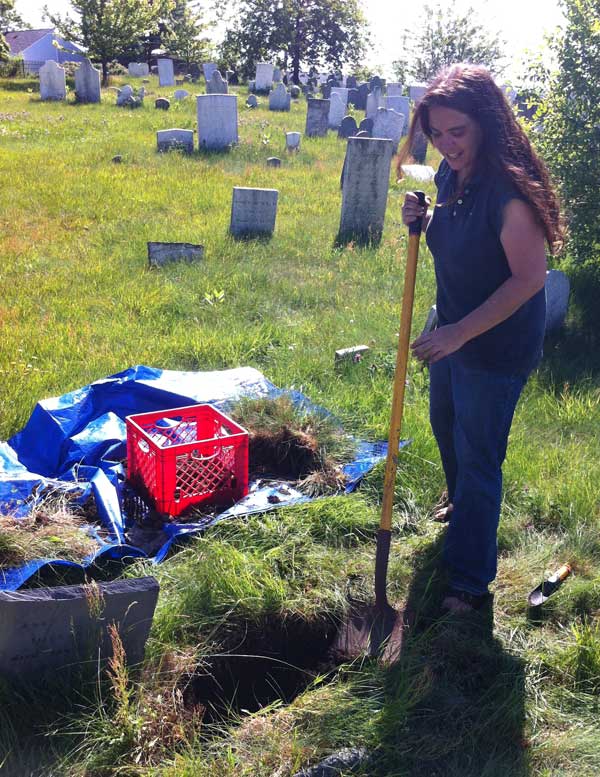
Nikki places the sod on a tarp, and as she digs, places dirt in the crate. This crate will be used to sift large stones from the dirt. The dirt and sod will be placed in the hole at the end.
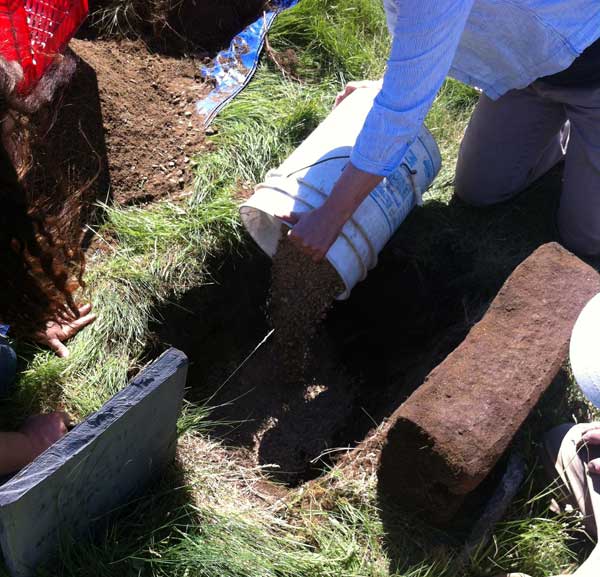
After Ron removes the stone base (see right), Martha dumps the gravel mix into the hole and levels it.
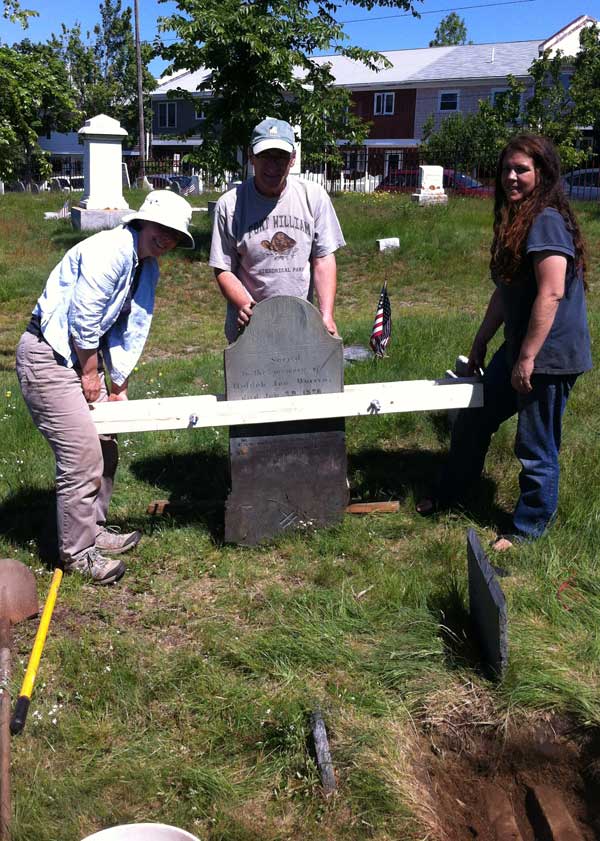
Using 2x4s screwed together as a clamp, Martha, Ron and Nikki prepare to move the heavy stone into the hole and into its base.
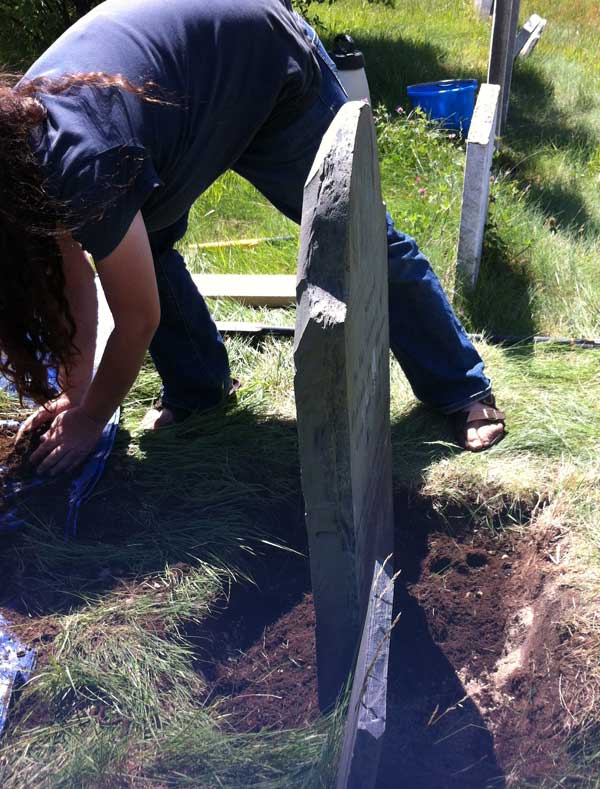
The hole is filled with dirt from the tarp that has been sifted for large stones. It will also be tamped down.
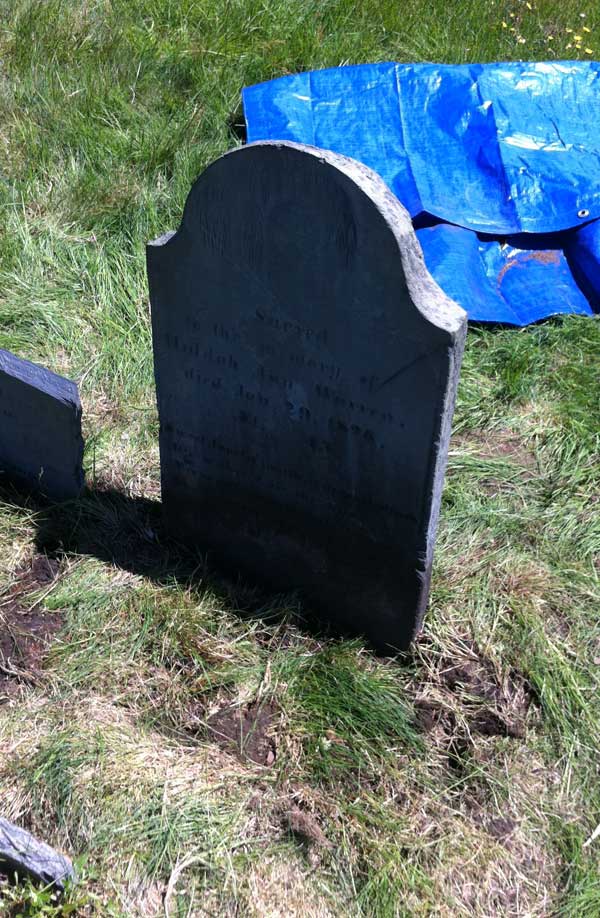
This is Huldah Warren's stone, now reset! Notice that the original sod has been replaced. The whole area will be thoroughly wet down with water. To compare it with the original condition, skip to the leaning photo.
Check out times and dates for planned Stone Conservation Workdays. We'd love to have you join us!
For more information, email us today.